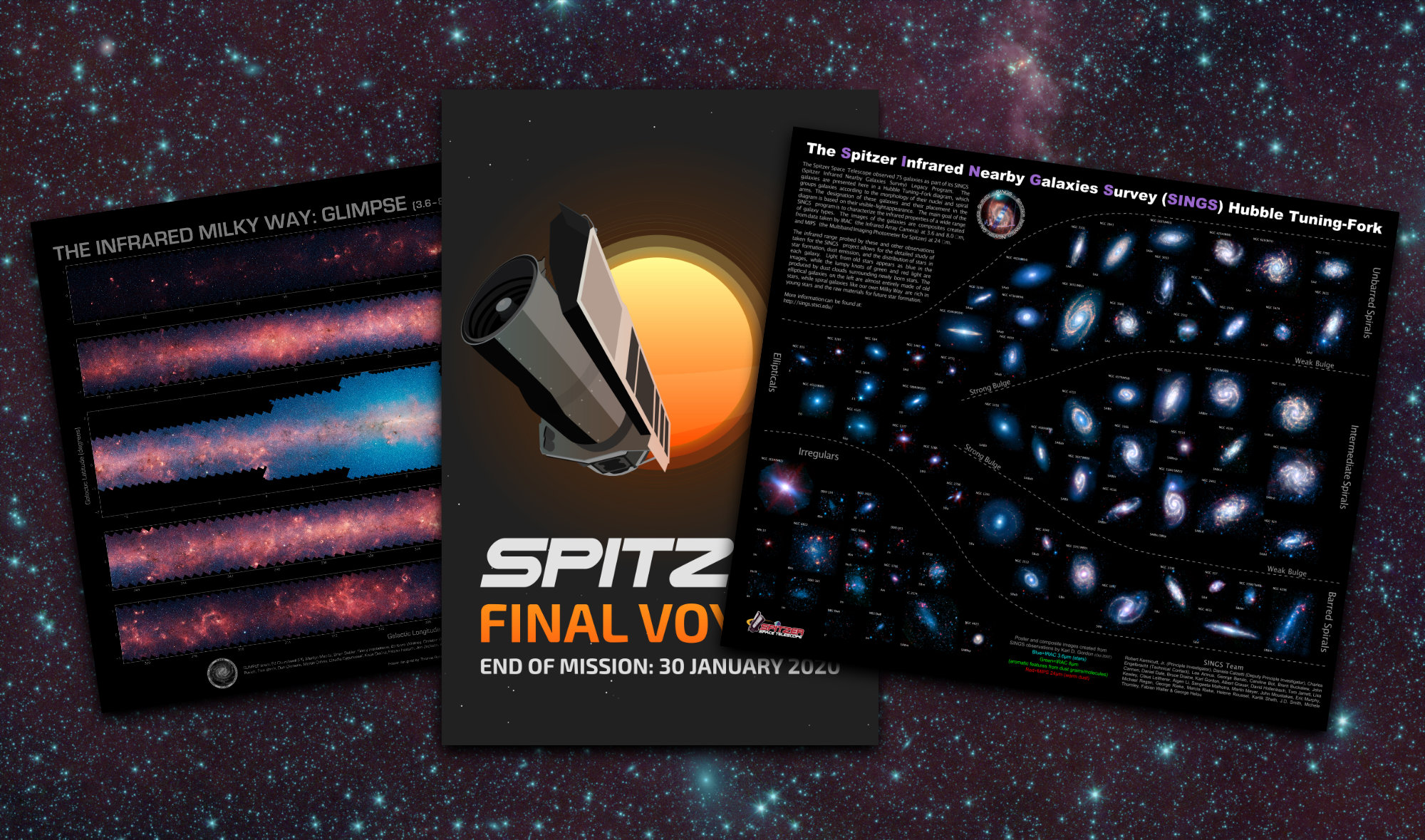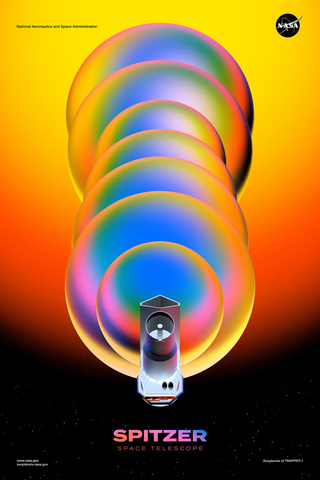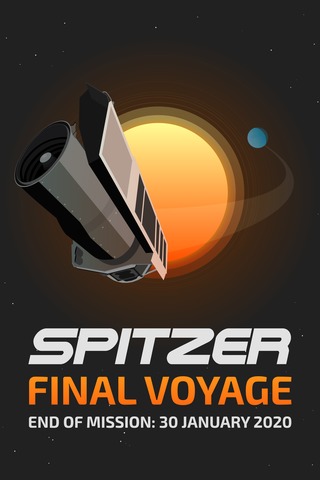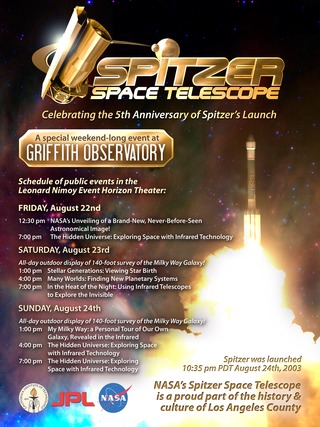A collection of cosmic posters for your wall or classroom!

This poster depicts the TRAPPIST-1 planets, some of which were discovered by Spitzer.
A poster celebrating Spitzer Final Voyage. On January 30th 2020, NASA's Spitzer Space Telescope will complete its mission. The Spitzer Final Voyage web page will tell its story, showcase new science and highlight its most outstanding achievements during the past 16 years in space.
A poster created for the celebration of the 5th anniversary of the launch of NASA's Spitzer Space Telescope at Griffith Observatory in Los Angeles.
A two-page, fun, informative brochure about asteroids, the space rocks with a story. Find out what they are, where we find them, how we discovered them, and how they formed in the first place.
A two-page, fun, informative brochure about dwarf planets. Though small in size, they are a big mystery. Find out what dwarf planets are, where you can find them, and what they're made of. Plus, find out more about everyone's favorite dwarf planet, Pluto!
A four-page, fun, informative brochure about the many smaller bodies of our solar system. Learn all about dwarf planets, moons, comets, asteroids, and meteors. Find out what these small worlds tell us about our solar system's formation.
A four-page "fun fact" brochure about comets and asteroids—what makes them similar and what makes them different. Lots of fun facts, plus a comet vs. asteroid wordfind.
A two-page "fun fact" brochure about comets. What are they? Where do they come from? How do they get their names? What new discoveries about comets have space missions revealed?
The Multiwavelength Universe. The front shows a composite image of the Pinwheel Galaxy that includes X-ray, ultraviolet, visible, and infrared light. Each wavelength reveals something different about the galaxy. The back of poster explains how different telescopes that detect different wavelengths are all necessary in order for us to begin to understand galaxies, stars, planets, and the evolution of the universe.
The Art of space Imagery. The front is a mosaic of hundreds of thousands of frames of the Milky Way galaxy capture in infrared light by the Spitzer Space Telescope. On the back is a tutorial on how images captured in non-visible light are translated to visible light colors so that people can see, study, and enjoy them.
The Infrared Universe. The front is a montage of the different kinds of questions that infrared astronomy can address, regarding the cosmos, galaxies, star formation, star remains, and extrasolar planets. On the back are descriptions of how infrared astronomy works, why it is important, and some of the discoveries made so far. It also includes a classroom version of the Herschel experiment in which infrared light was discovered.
The North America Nebula. A stunning image in infrared and visible light shows a region of stars and dusty clouds that are hidden in visible light alone. Back of poster has nine 8-1/2x11-inch panels that explain the electromagnetic spectrum and infrared astronomy, including the importance of infrared for studying galaxies and the distant universe, as well as planets. The famous experiment in which Sir Frederick William Herschel discovered infrared light is included as a classroom activity.
4-page description and activity. Explains and gives instructions for repeating the experiment William Herschel performed in discovering infrared light.
Spitzer poster: Eta Carinae star forming region. Beautiful glowing pillars of dense gas and dust in this Spitzer infrared image clearly reveal areas where new stars are forming. Articles on back of poster explain about the image, about infrared light, and infrared astronomy. It also includes a classroom version of Sir Frederick Herschel's 1800 experiment in which he discovers invisible infrared light.
Spitzer Poster: Multiwavelength Andromeda Galaxy. Three images of the beautiful spiral Andromeda Galaxy demonstrate the discoveries scientists are making by observing galaxies in many different wavelengths of light. The top image is in visible light. The middle image is a composite of wavelengths that are emitted by stars and active star-forming regions. The bottom image is a composite of wavelengths that highlight the gas and dust in the galaxy. Herschel's discovery of infrared light and Ritter's discovery of ultraviolet light are both described as experiments to be done in the classroom.
This .pdf file includes 21 postcards, each with a stunning image from the Spitzer Space Telescope (plus a few artist's renderings).
Four "back-to-back" bookmarks with four Spitzer images of galaxies. Captions on bookmarks describe the images.






